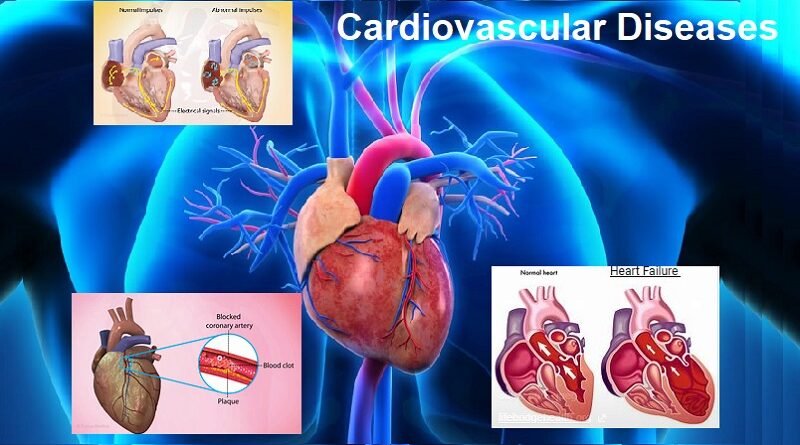Understanding Cardiovascular Diseases
Welcome to our comprehensive guide on cardiovascular diseases. This group of diseases (CVD) is one of the leading causes of death globally, posing a significant threat to public health. Despite its prevalence, there is often confusion about what exactly Cardiovascular diseases entail and their potential consequences.
At HELALMEDICAL, we strive to provide you with valuable information that can help you understand the various types of cardiovascular diseases, their symptoms, and the available treatment options. In this article, we will explore the world of cardiovascular disease, its definition and types, risk factors, symptoms, and preventive measures.
Understanding Cardiovascular Diseases
Cardiovascular diseases refer to a group of disorders that affect the heart and blood vessels. These conditions include coronary artery disease, heart failure, arrhythmias, and valvular heart diseases. These ailments can have a significant impact on an individual’s well-being and overall quality of life.
Types of Cardiovascular Diseases
- Coronary Artery Disease (CAD):
CAD occurs when there is a buildup of plaque in the arteries that supply blood to the heart muscle. This can result in reduced blood flow, leading to chest pain (angina), heart attacks, and potentially life-threatening complications. - Heart Failure:
Heart failure refers to a condition where the heart becomes weakened and is unable to pump blood efficiently. This can lead to symptoms such as shortness of breath, fatigue, and fluid retention. - Arrhythmias:
Arrhythmias are abnormalities in the heart’s rhythm. They can manifest as irregular heartbeats, palpitations, or a sensation of the heart racing. These disturbances in the heart’s electrical system can have varying degrees of severity. - Valvular Heart Diseases:
Valvular heart diseases involve abnormalities in the heart valves, impairing their ability to regulate blood flow properly. Conditions like aortic stenosis or mitral regurgitation can lead to symptoms such as chest pain, fatigue, and shortness of breath.
Risk Factors for Cardiovascular Disease
- Unhealthy Diet and Lifestyle
- Lack of Physical Activity
- Tobacco and Alcohol Consumption
- Obesity and Overweight
- High Blood Pressure
- High Cholesterol Levels B. Non-Modifiable Risk Factors
- Age
- Gender
- Family History
- Ethnicity
Symptoms of Cardiovascular Diseases
The symptoms vary depending on the specific condition. However, there are some symptoms and signs that are common including:
- Chest pain or discomfort
- Shortness of breath
- Fatigue or weakness
- Palpitations or irregular heartbeats
- Dizziness or fainting
- Swelling in the legs, ankles, or abdomen
Notice that not all patients have the same symptoms. Moreover, some individuals may experience no noticeable symptoms, making regular check-ups and screenings essential for early detection.
Diagnosis
Prompt diagnosis and appropriate treatment are vital for managing cardiovascular diseases effectively. If you suspect any heart-related issues, it is essential to seek medical attention from a qualified healthcare professional. They will perform a comprehensive evaluation, which may include the following:
- Medical History Assessment:
Your healthcare provider will inquire about your medical history, family history of heart disease, and any symptoms you may be experiencing. - Physical Examination:
A thorough physical examination, including listening to your heart and checking your blood pressure, will help identify any noticeable abnormalities. - Diagnostic Tests:
To further evaluate your cardiovascular health, your healthcare provider may recommend diagnostic tests such as:- Electrocardiogram (ECG/EKG): This test records the electrical activity of your heart to detect any irregularities.
- Echocardiogram: This ultrasound-based test provides detailed images of the heart’s structure and function.
- Stress Test: A stress test evaluates how your heart performs under exertion, helping to identify potential issues.
Treatment
Once a diagnosis is established, the treatment approach will depend on the specific condition and its severity. Treatment options may include:
- Medications:
Depending on the type of cardiovascular disease, your healthcare provider may prescribe medications to manage symptoms, control blood pressure, reduce cholesterol levels, prevent blood clots, or regulate heart rhythm. - Interventional Procedures:
- In some cases, interventional procedures may be necessary to treat cardiovascular diseases. These procedures aim to restore blood flow, repair damaged heart valves, or correct abnormalities. Examples include angioplasty, stent placement, and heart valve repair or replacement surgeries.
- Cardiac Rehabilitation:
Following a cardiovascular event or procedure, participating in a cardiac rehabilitation program can aid in the recovery process. These programs often include supervised exercise, education on heart-healthy habits, and emotional support. - Surgical Interventions: In more severe cases, surgical interventions may be required. These can involve bypass surgery to create alternative pathways for blood flow, heart transplant for end-stage heart failure, or other complex procedures.
It is important to note that treatment plans are tailored to each individual’s specific needs, and decisions regarding the best course of action should be made in consultation with a healthcare professional.
Preventive Measures for Cardiovascular Health
Prevention plays a crucial role in reducing the risk of cardiovascular diseases. By adopting healthy lifestyle choices and implementing preventive measures, you can promote your cardiovascular well-being. Here are some key strategies to consider:
- Maintain a Balanced Diet:
Focus on a diet rich in fruits, vegetables, whole grains, lean proteins, and healthy fats. Limit your intake of saturated and trans fats, cholesterol, sodium, and added sugars. - Engage in Regular Physical Activity:
Incorporate moderate-intensity aerobic exercise into your routine for at least 150 minutes per week. Activities like brisk walking, cycling, swimming, or dancing can help strengthen your heart and improve overall cardiovascular fitness. - Avoid Tobacco Products:
Smoking and exposure to secondhand smoke significantly increase the risk of developing cardiovascular diseases. Quitting smoking is one of the most beneficial steps you can take to protect your heart health. - Manage Stress:
Chronic stress can contribute to the development of cardiovascular diseases. Practice stress-reduction techniques such as deep breathing, meditation, yoga, or engaging in hobbies that bring you joy. - Monitor Blood Pressure and Cholesterol Levels:
Regularly check your blood pressure and cholesterol levels to identify any abnormalities early on. Follow your healthcare provider’s recommendations for managing these levels within a healthy range. - Maintain a Healthy Weight:
Obesity and excess weight can strain the heart and increase the risk of cardiovascular diseases. Aim for a healthy body weight through a combination of balanced eating and regular physical activity.
SUMMARY:
Cardiovascular diseases encompass a range of conditions that can significantly impact your heart health and overall well-being. Understanding the different types, recognizing the symptoms, and seeking prompt medical attention is vital for effective management. By adopting a heart-healthy lifestyle and implementing preventive measures, you can reduce the risk of developing cardiovascular diseases.
If you suspect that you may have contracted one of these conditions, contact at Helalmedical or visit our Facebook page. We offer quick, private, and convenient testing options.




